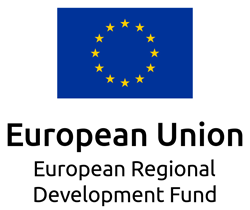Outsourcing has become an essential strategy for businesses aiming to reduce costs, enhance performance, and focus on core competencies. However, the success of outsourcing initiatives heavily relies on robust vendor management. This article explores best practices in vendor management to ensure successful outsourcing outcomes.
Strategic Assessment of Outsourced Activities
Thorough Analysis and Decision-Making
A crucial first step in outsourcing is the strategic assessment of which activities should be outsourced. This involves a deep dive into the company’s operations to identify tasks that can be efficiently managed by external vendors without compromising the company’s competitive edge. Core activities, which are integral to the company’s strategic positioning and competitive advantage, should typically remain in-house. These are the functions that differentiate the company in the market and are closely tied to its value proposition.
Evaluating Core vs. Non-Core Activities
Non-core activities, on the other hand, are those that support the business but do not contribute directly to its competitive positioning. These can include administrative tasks, certain IT functions, and other operational processes. Outsourcing these tasks to specialized vendors can improve efficiency, reduce operational costs, and allow the company to focus more on its strategic initiatives.
Criteria for Outsourcing Decisions
To effectively assess which activities to outsource, vendor managers should consider:
- Strategic Importance: Evaluate how critical the activity is to the company’s strategic objectives.
- Cost-Benefit Analysis: Assess the potential cost savings versus the value added by performing the task internally.
- Operational Impact: Consider the impact on operations and the potential risks involved in outsourcing.
- Market Availability: Determine if there are capable vendors in the market who can deliver the desired quality and efficiency.
Vendor Selection Process
Comprehensive Evaluation Process
Selecting the right vendor is paramount to the success of the outsourcing initiative. Vendor managers should implement a comprehensive evaluation process that includes both tangible and intangible criteria. This process involves several steps to ensure the chosen vendor aligns with the company’s strategic goals and operational standards.
Hard Qualifications
These are the tangible aspects of vendor evaluation and include:
- Technical Capabilities: Ensure the vendor has the necessary technical expertise and infrastructure.
- Cost Efficiency: Analyze the vendor’s pricing structure and financial stability.
- Track Record: Review the vendor’s history of performance, client testimonials, and case studies.
- Compliance and Certifications: Verify that the vendor complies with industry standards and holds relevant certifications.
Soft Qualifications
The intangible, yet equally important, aspects of vendor evaluation:
- Cultural Fit: Ensure the vendor’s values, work style, and corporate culture align with your organization’s profile.
- Commitment to Continuous Improvement: Evaluate the vendor’s dedication to regularly enhancing their processes, services, and technologies.
- Flexibility and Adaptability: Assess the vendor’s ability to adjust their processes and services in response to changing circumstances and requirements.
- Communication Skills: Review the effectiveness of the vendor’s communication, including clarity, responsiveness, and the ability to convey complex information.
- Trustworthiness: Measure the vendor’s reliability and integrity, ensuring they will act in your organization’s best interests even in challenging situations.
- Long-Term Relationship Orientation: Consider the vendor’s willingness and capability to build and maintain a long-term partnership with your organization.
- Problem-Solving Ability: Look into the vendor’s track record for identifying issues proactively and implementing effective solutions.
- Innovation Mindset: Evaluate the vendor’s tendency to innovate and propose new ideas that can add value to your business.
Crafting Comprehensive Contracts
Detailed and Balanced Agreements
A well-structured contract is the foundation of a successful outsourcing relationship. Ensure that contracts are detailed, balanced, and adaptable. Key elements of a strong contract include clear performance metrics, service level agreements (SLAs), penalty clauses for non-compliance, and provisions for technological and market changes. Contracts must precisely define the scope of work, deliverables, timelines, and quality standards. This clarity helps avoid misunderstandings and sets clear expectations for both parties. A balanced contract also ensures that both the client and vendor have aligned incentives and share risks and rewards fairly. This approach fosters a collaborative rather than adversarial relationship.
For example, a European bank’s outsourcing contract failed because it was rushed and lacked precise terms. The bank ended up paying extra fees for basic services and faced increased costs due to a rigid pricing structure that did not account for declining business volumes. This case highlights the importance of spending adequate time developing a detailed and balanced contract.
Flexibility and Adaptability
Contracts should also be flexible to accommodate changes in technology and business environments. Flexibility clauses can help both parties adapt to unforeseen circumstances and evolving requirements without extensive renegotiations. Including flexibility clauses can mitigate risks, ensuring that the contract remains relevant and effective over time. Additionally, incentive-based clauses that reward vendors for exceeding performance targets can drive continuous improvement and alignment with the client’s strategic objectives.
An example of the benefits of a flexible contract can be seen in the utilities firm that successfully outsourced its IT function. By ensuring the contract included provisions for adjusting terms based on performance and changing needs, the firm maintained operational efficiency and cost control while also fostering a strong relationship with the vendor.
Identifying and Managing Hidden Costs
Detailed Cost Analysis and Planning
Hidden costs can undermine the financial benefits of outsourcing. Conduct detailed cost analyses, considering all transaction costs, including vendor search, contracting, and ongoing management expenses. These costs are often underestimated but can significantly impact the overall cost-effectiveness of outsourcing. Transaction cost economics (TCE) suggests that search and contracting costs are incurred before the outsourcing operation begins, while vendor management costs continue throughout the relationship. A comprehensive understanding of these costs helps in making informed decisions and ensuring that the outsourcing initiative remains economically viable.
Mitigating Hidden Costs
Effective planning and management can help mitigate these hidden costs. This includes investing in thorough vendor evaluation and contract negotiation processes to minimize search and contracting costs. Additionally, maintaining a dedicated team to oversee vendor performance can reduce ongoing management expenses by preventing service disruptions and ensuring compliance with contract terms. For instance, comparing the hidden costs of two logistics outsourcing contracts, it was found that higher idiosyncrasy levels significantly increased search and management costs. By understanding these dynamics, you can develop strategies to control hidden costs and maximize the benefits of outsourcing.
Planning for Continuity and Exit Strategies
Developing Exit Strategies
An effective exit strategy is essential for managing the end of an outsourcing contract. Vendor managers should include reversibility clauses in contracts to facilitate seamless transitions, whether switching vendors or reintegrating the activity in-house. This proactive planning ensures that the company is not locked into a relationship with a poorly performing vendor and can adapt to changing circumstances. Exit strategies should detail the steps for transferring knowledge, assets, and personnel back to the company or to a new vendor, minimizing disruptions and maintaining operational continuity.
Building Reversibility Clauses
Including material and human reversibility clauses in contracts provides leverage during negotiations and ensures flexibility. Material reversibility clauses allow the company to buy back equipment and premises, while human reversibility clauses enable rehiring of transferred employees. These clauses help protect the company from being overly dependent on a single vendor and ensure that transitions are smooth and efficient. For instance, a retail company faced difficulties when trying to switch vendors because their contract lacked adequate reversibility provisions. By planning for potential exit scenarios from the outset, vendor managers can safeguard the company’s interests and ensure long-term success.
Conclusion
Effective vendor management is key to outsourcing success. By strategically assessing activities, selecting the right vendors, crafting detailed contracts, managing personnel transitions, maintaining control, identifying hidden costs, and planning for continuity, businesses can maximize outsourcing benefits. Robust vendor management transforms outsourcing into a strategic advantage, driving performance improvements and sustaining competitive positioning.










